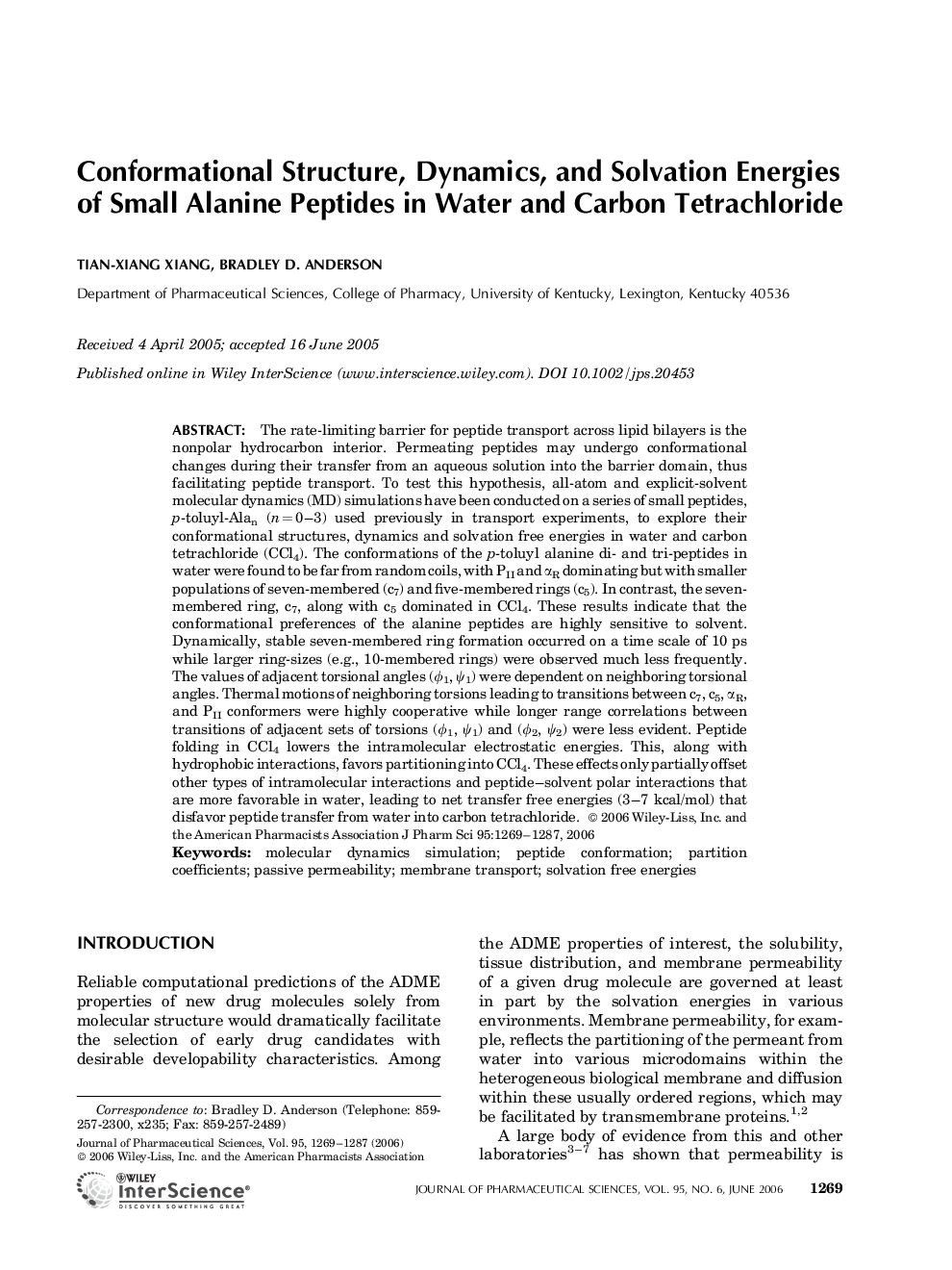| کد مقاله | کد نشریه | سال انتشار | مقاله انگلیسی | نسخه تمام متن |
|---|---|---|---|---|
| 2488097 | 1114456 | 2006 | 19 صفحه PDF | دانلود رایگان |
عنوان انگلیسی مقاله ISI
Conformational structure, dynamics, and solvation energies of small alanine peptides in water and carbon tetrachloride
دانلود مقاله + سفارش ترجمه
دانلود مقاله ISI انگلیسی
رایگان برای ایرانیان
کلمات کلیدی
موضوعات مرتبط
علوم پزشکی و سلامت
داروسازی، سم شناسی و علوم دارویی
اکتشاف دارویی
پیش نمایش صفحه اول مقاله

چکیده انگلیسی
The rate-limiting barrier for peptide transport across lipid bilayers is the nonpolar hydrocarbon interior. Permeating peptides may undergo conformational changes during their transfer from an aqueous solution into the barrier domain, thus facilitating peptide transport. To test this hypothesis, all-atom and explicit-solvent molecular dynamics (MD) simulations have been conducted on a series of small peptides, p-toluyl-Alan (n = 0-3) used previously in transport experiments, to explore their conformational structures, dynamics and solvation free energies in water and carbon tetrachloride (CCl4). The conformations of the p-toluyl alanine di- and tri-peptides in water were found to be far from random coils, with PII and αR dominating but with smaller populations of seven-membered (c7) and five-membered rings (c5). In contrast, the seven-membered ring, c7, along with c5 dominated in CCl4. These results indicate that the conformational preferences of the alanine peptides are highly sensitive to solvent. Dynamically, stable seven-membered ring formation occurred on a time scale of 10 ps while larger ring-sizes (e.g., 10-membered rings) were observed much less frequently. The values of adjacent torsional angles (Ï1, Ï1) were dependent on neighboring torsional angles. Thermal motions of neighboring torsions leading to transitions between c7, c5, αR, and PII conformers were highly cooperative while longer range correlations between transitions of adjacent sets of torsions (Ï1, Ï1) and (Ï2, Ï2) were less evident. Peptide folding in CCl4 lowers the intramolecular electrostatic energies. This, along with hydrophobic interactions, favors partitioning into CCl4. These effects only partially offset other types of intramolecular interactions and peptide-solvent polar interactions that are more favorable in water, leading to net transfer free energies (3-7 kcal/mol) that disfavor peptide transfer from water into carbon tetrachloride. © 2006 Wiley-Liss, Inc. and the American Pharmacists Association
ناشر
Database: Elsevier - ScienceDirect (ساینس دایرکت)
Journal: Journal of Pharmaceutical Sciences - Volume 95, Issue 6, June 2006, Pages 1269-1287
Journal: Journal of Pharmaceutical Sciences - Volume 95, Issue 6, June 2006, Pages 1269-1287
نویسندگان
Tian-xiang Xiang, Bradley D. Anderson,